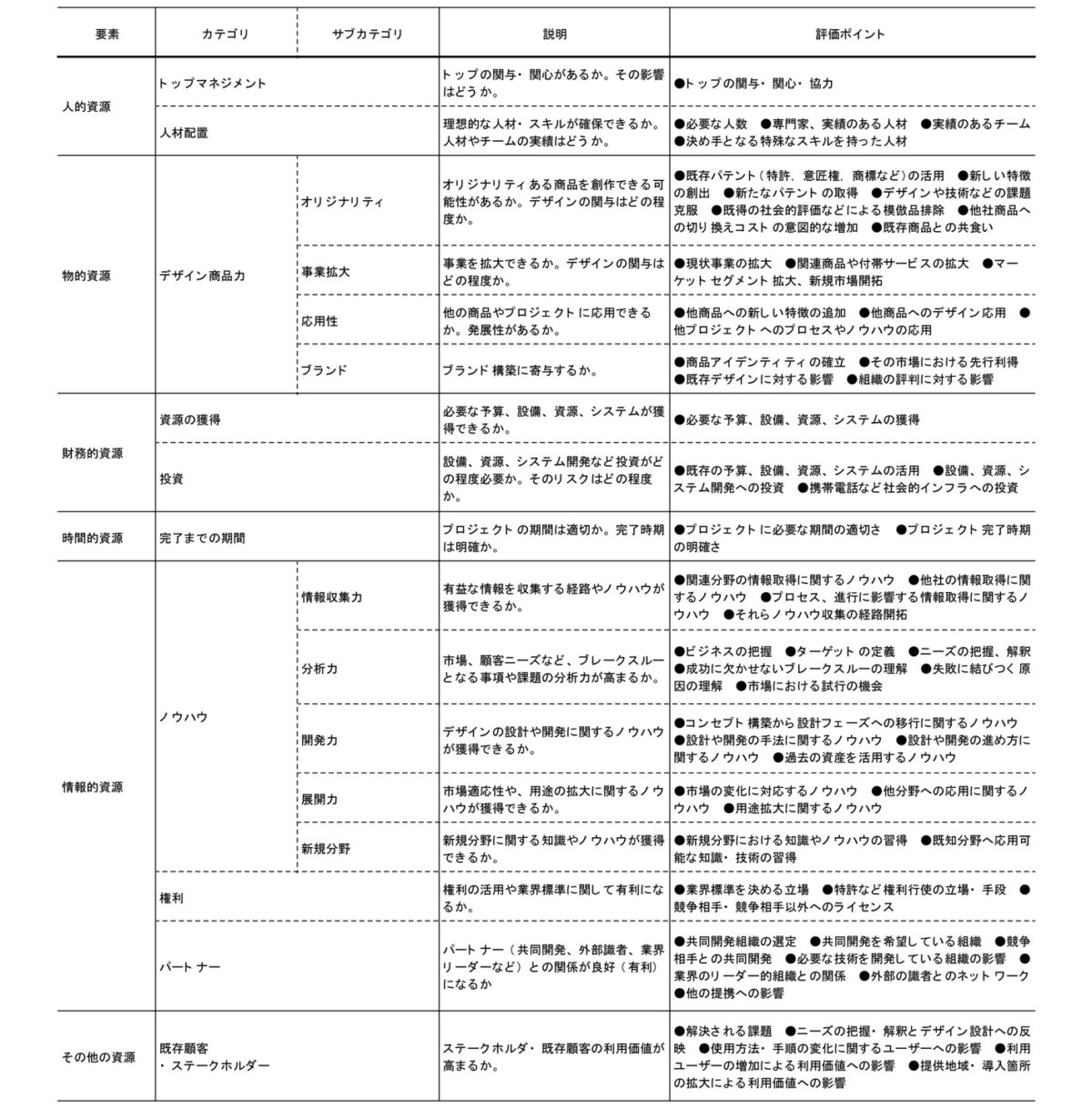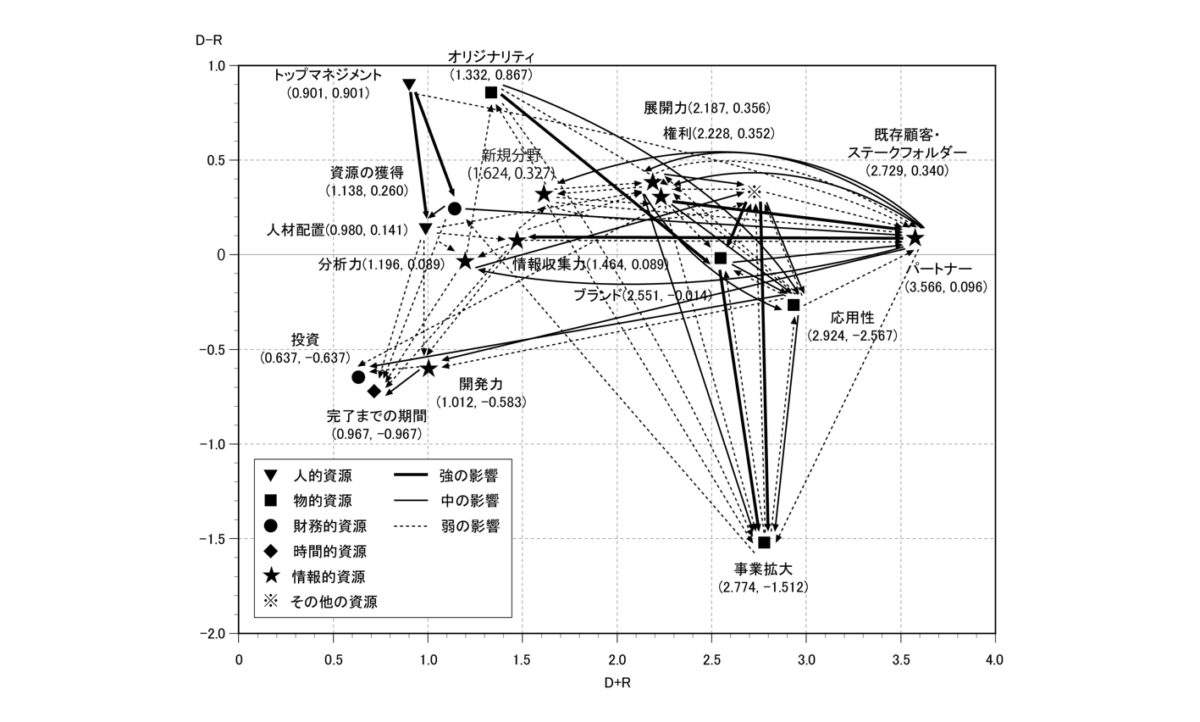Joint Research: Hitachi, Ltd. Design Headquarters (at the time)
Proposal for Strategic Task Execution Methods for Design Projects – Using Information Design as an Example
This proposal aims to use the concepts of “understanding characteristics of design projects” and “extracting success factors and risk hedging factors” to inform its research purpose, which is to establish which methods allow design projects to be executed in a strategic manner in line with the basic management processes of strategy formulation.
In “Characteristics of Design Projects,” items for evaluation have been collected and organized based on past research into R&D, with 17 classifications of strengths and weaknesses (Table 1) and 13 classifications of opportunities and threats (Table 2) for an overall total of 30 classifications of evaluation items.
In “Success Factors and Risk Hedging Factors,” 17 classifications of performance items were generated based on 17 classifications of evaluation items relating to strengths and weaknesses, and the relationships between these performance items (Fig.) were analyzed using the DEMATEL method (※). In addition, through comparing the importance and the feasibility of each performance item, it has been possible to construct a way to derive success factors and risk hedging factors. From there, it has been possible, using case studies, to verify the applicability of each item and of the concepts constructed from analysis of these items.
※Decision Making Trial and Evaluation Laboratory Methods
Table 1: 17 classifications of evaluation items connected to strengths and weaknesses

Table 2: 13 evaluation items connected to opportunities and threats


Figure: Impact relationships of 17 classifications of performance items based on DEMATEL method
DOI: https://doi.org/10.11247/jssdj.62.6_95
Keyword: Design Project, Design Strategy, Design Management
Please contact us for further information
2020.12.18

 Return to List
Return to List